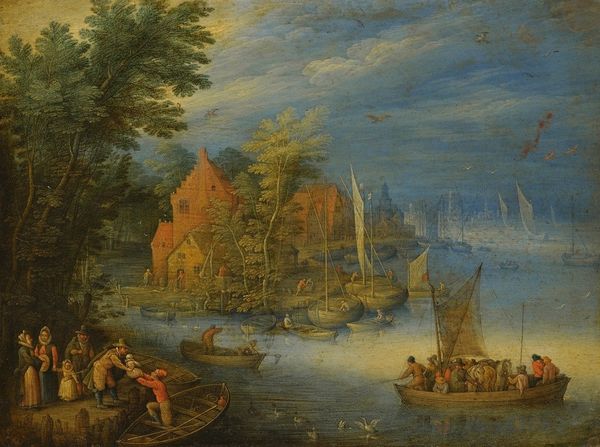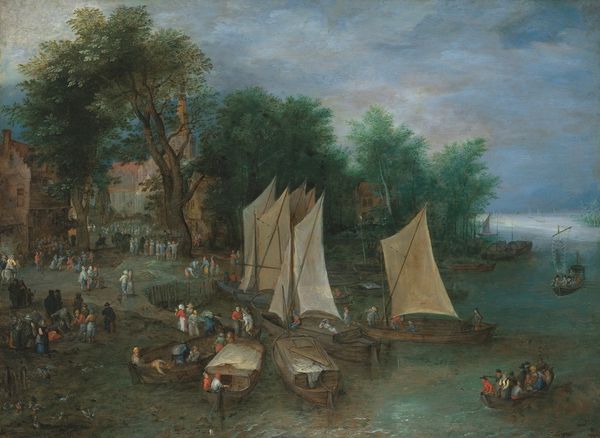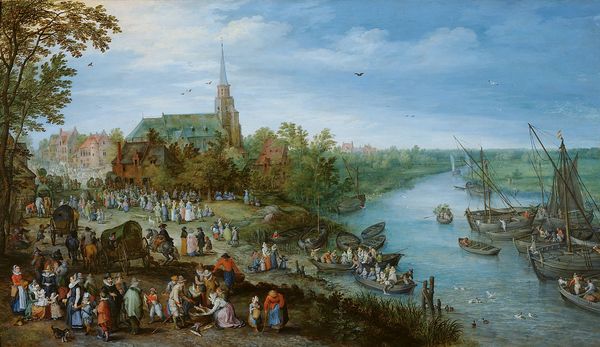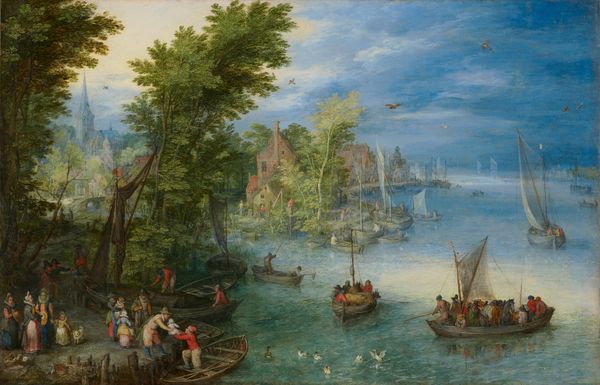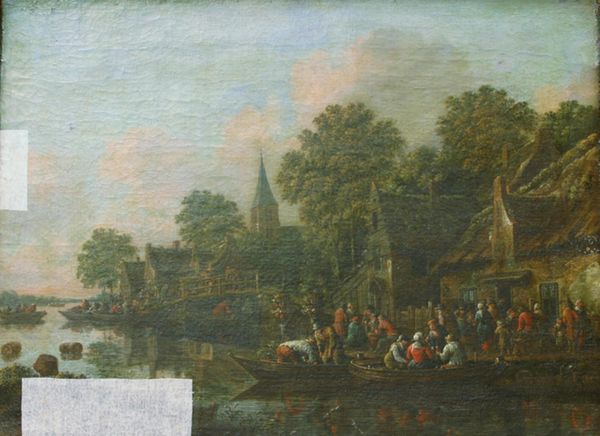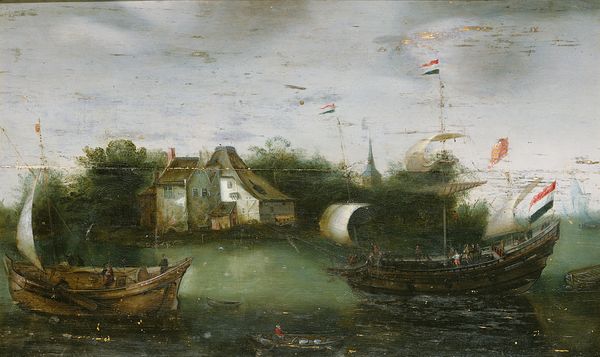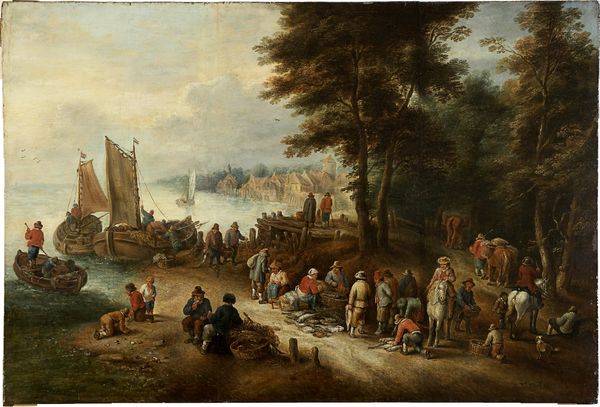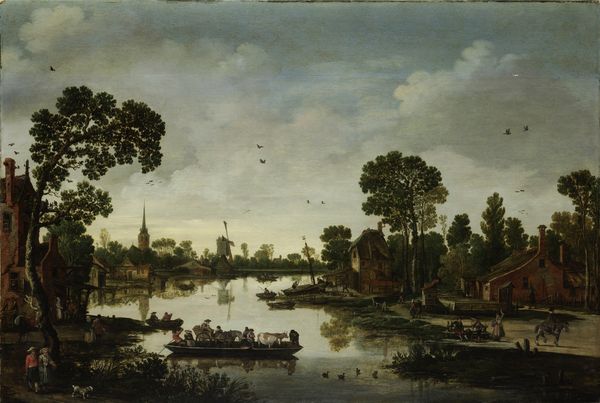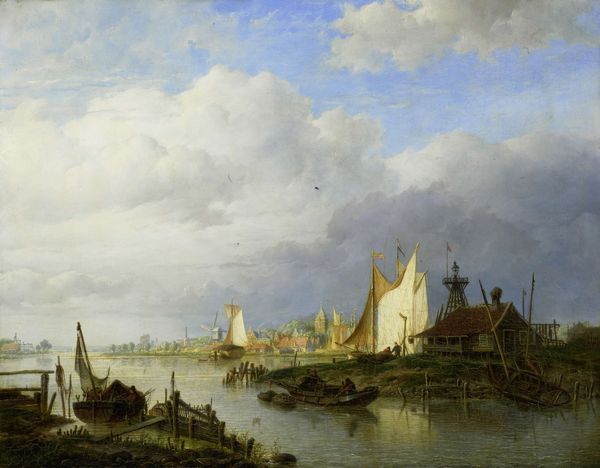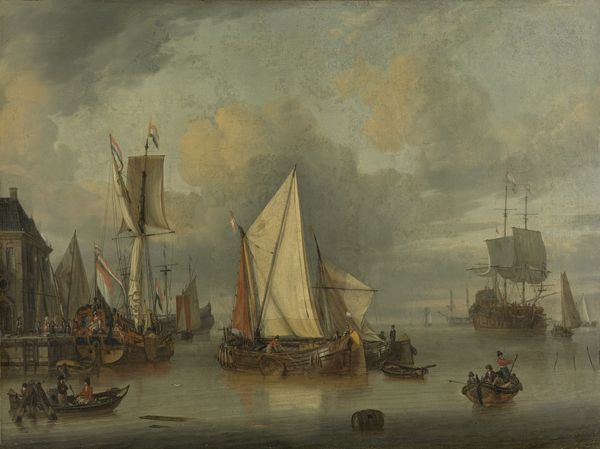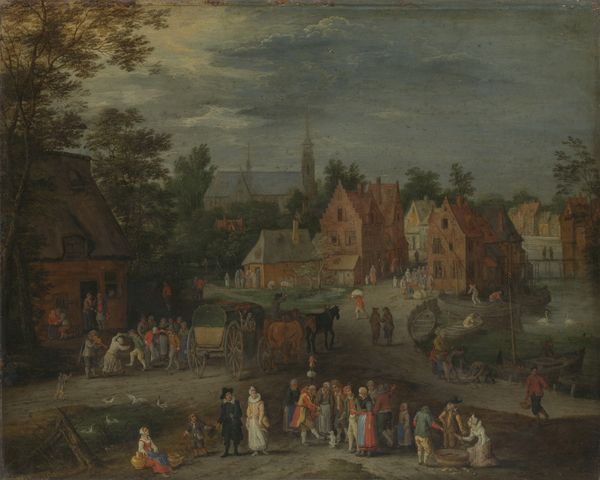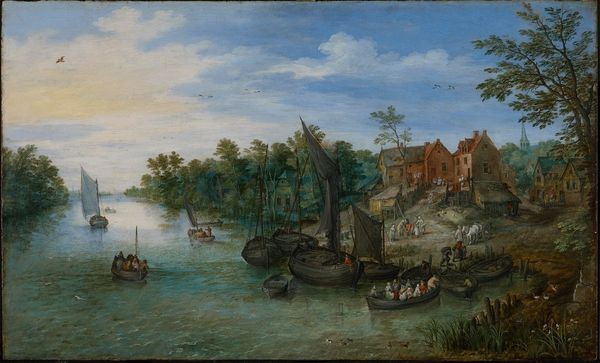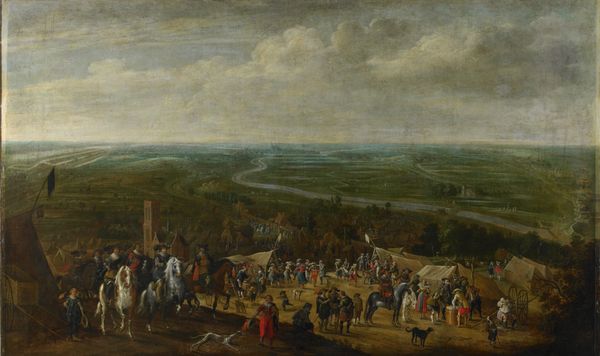
painting, oil-paint
#
water colours
#
baroque
#
dutch-golden-age
#
painting
#
oil-paint
#
landscape
#
cityscape
#
genre-painting
Dimensions: height 38.5 cm, width 56.5 cm, depth 6 cm
Copyright: Rijks Museum: Open Domain
Editor: This is Joseph van Bredael’s "Village on the Bank of a River" from 1723. The way the oil paint captures the light on the water and the details of everyday life is quite striking. It gives a real sense of place. What draws your eye when you look at this piece? Curator: I’m immediately drawn to the depiction of labor within this seemingly idyllic landscape. Observe the various figures and their activities – loading boats, driving carts, even just sitting and resting. Each is engaged in some form of work or commerce. Editor: So, you're thinking about the painting as documentation of the economy? Curator: Exactly. Consider the materiality of the world being represented. The windmill harnesses the wind's energy to grind grain, the boats facilitate trade and transportation, the buildings themselves are constructed from locally sourced materials. This painting presents a material reality and its social context, of 18th-century riverfront life that depended entirely on this labor. It highlights how different elements came together through effort and technique. Look at the figures and think, what is being bought? Sold? Where is it going? How does this create society? Editor: I hadn't really thought about it that way, but it definitely changes how I see it. All the individual stories that lead into commerce, industry, or progress, through use of oil paint, canvas and labor as depicted on canvas. Curator: Precisely. We shouldn't view this simply as a picturesque scene, but rather as a complex web of human activity shaped by and dependent on the material world. Consider van Bredael’s own labor, producing this depiction. How many brushes? The cost and provenance of pigments? It changes the perspective entirely. Editor: This conversation has certainly encouraged me to look beyond the aesthetic and to consider the historical processes and materiality represented within it! Curator: Indeed, seeing the painting through a materialist lens provides a new layer of understanding and appreciation.
Comments
No comments
Be the first to comment and join the conversation on the ultimate creative platform.
